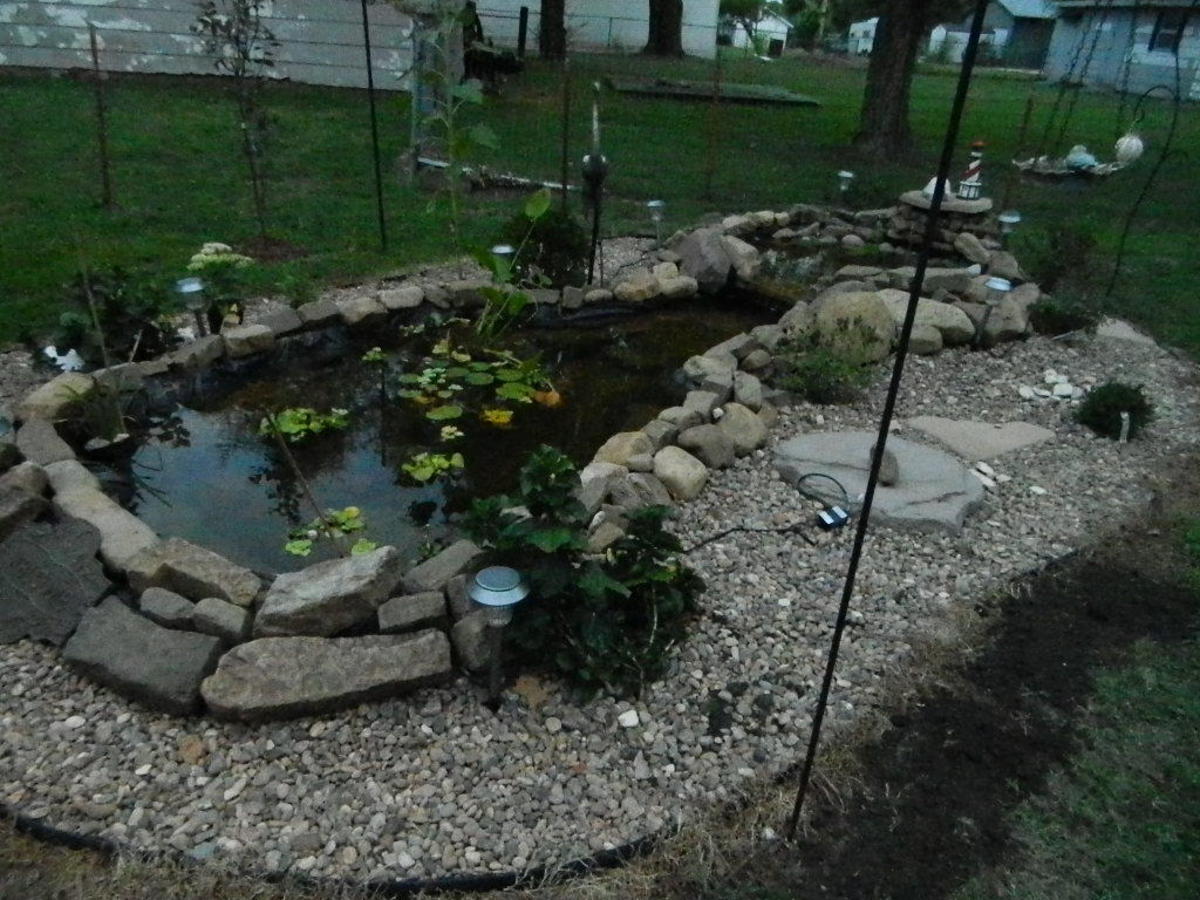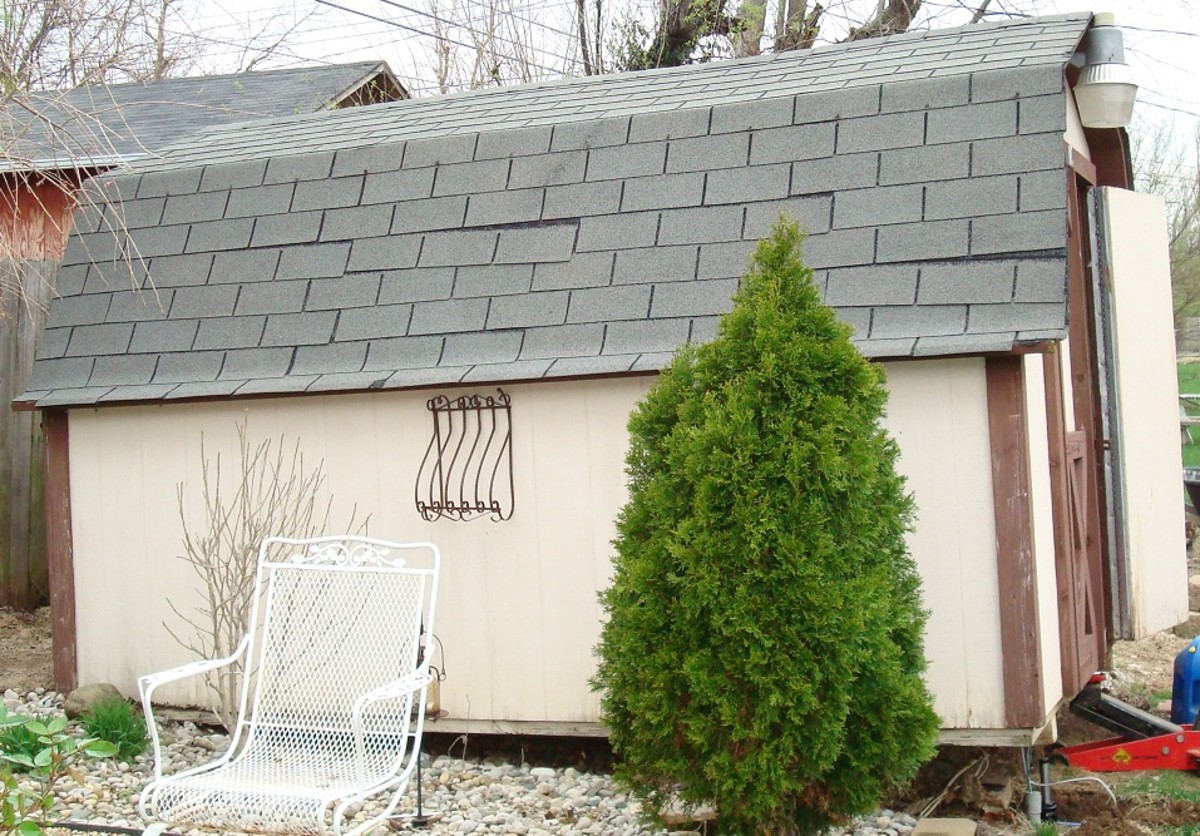Planning Your Backyard Garden For A Self-Sufficient Lifestyle
So You Want to Be Self-sufficient, Eh?
Well there is no better time to start than now.
First things first. Being totally self-sufficient in the city may be a myth. In this modern world it really is a utopia few people attain. Still, we can all become more self-sufficient, and starting a backyard garden or mini-farm is a great step in the right direction. The satisfaction one gains from growing vegetables from seed cannot be measured in dollars, but the savings to your grocery bill most certainly can be. Add to that the fact that when you grow organically you no longer have to worry about poisons in your food supply.
Whether you have a postage-stamp size backyard or an acre or two to play with, the following suggestions can get you started on the road to self-sufficiency.
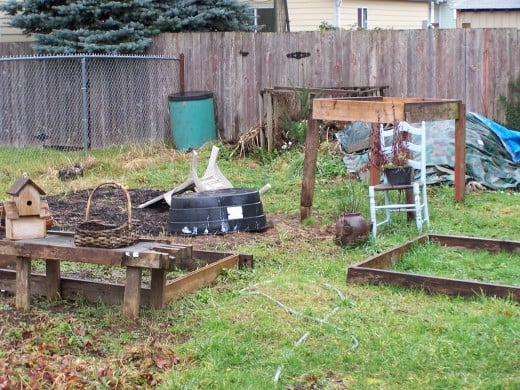
Municipal Regulations
Before you ever put shovel to sod, check with your local government to find out what is allowed in your area. There are two types of municipal regulations to be concerned about. The first is zoning. A city is divided into certain zones which determine what is allowed and what is not allowed on property. Some cities do not allow chickens in an urban area; some allow chickens but no roosters. Some cities allow vegetable gardens in the front yard; some only in the back yard. If you plan on building structures such as a tool shed or chicken coop you will have to check on the setback regulations which tell you the distance from the lot line to a permanent structure.
The other regulation to be considered is an easement. This has to do with the access to utilities and might also include a neighbor’s right to share a driveway or curb strips.
Of course, if you plan on building a structure, you will also have to abide by local building codes….or you can do what I do and just not mention it to the city officials. J
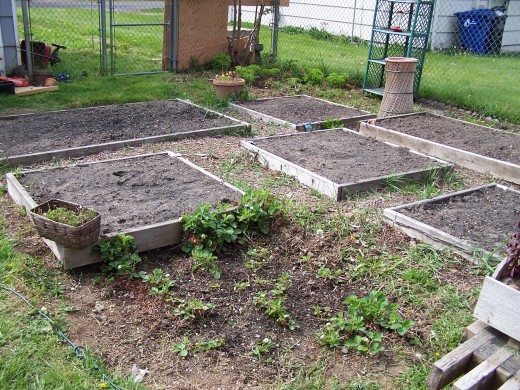
Assessing Sunlight
Many a gardener/farmer has failed because they did not assess the sunlight situation in their yard. Before you make your final plans you must know what areas of your yard receive full sun and what areas receive partial sun or no sun at all.
Full sun plants like tomatoes, squash, pepper and peas, need a minimum of six hours of sunlight. Anything less and they have no chance of growing to their full potential. Again, that is six hours minimum; they can, in fact, handle much more than six hours.
Other plants do better in partial sun/shade. Plants like lettuce, cooking greens, some herbs, do well in four hours of sun.
If you plan on having rabbits and/or chickens, shade is preferred during the summer months, so that needs to be considered as well.
Remember, when assessing your yard for sunshine, it does no good to assess it during the winter. The angle of the sun will change drastically by late spring, so plan accordingly. Of course, if you have no trees or tall buildings to block the sun, then the matter is moot.
BRAINSTORM
Now for the fun part of this project. Sit down and decide what it is you want in your mini-farm. Make a list of all the things you would like to have. You may not be able to get to them all; your site might not be welcoming to all of your ideas; still, make a list and you can weed out ideas later that just won’t work on your site.
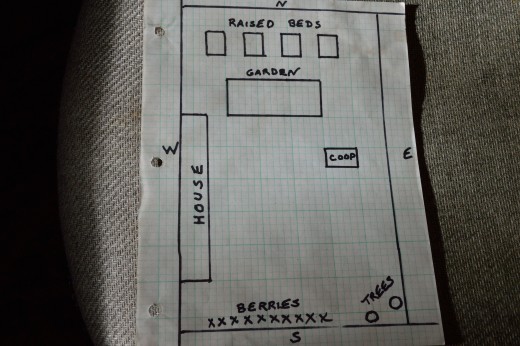
Draw a Site Plan
Next you need to draw a plan that will serve as your blueprint for the future. Using standard 8x11 graph paper is the best way to make this plan. First you will need to go outside and measure your yard, and then make your graph according to scale.
Include everything in your drawing, from trees to outbuildings to fences. When the drawing is completed it should be an accurate depiction of what your yard currently looks like.
Then you can start planning your new additions. Where will the garden go? Where will the chicken coop go? Plan on future growth while you are at it. What about those grape vines that will indeed spread? How about your children’s jungle gym?
Some other things to consider:
- If possible, locate any livestock away from the lot lines and as far away from neighbors as possible.
- Make sure you include room for pathways so you can get that wheelbarrow where it is needed.
- Try to plan so that things are handy. Having the herbs near the kitchen would be a good idea; having a compost bin between the chicken coop and the garden is smart planning.
- Give yourself room between raised beds. Usually two feet of space is adequate for moving around and getting supplies where they are needed.
- Plan for watering. Where is the water supply and how are you going to get it to the garden?
- Plan on a power source as well.
Once you have your plans drawn up you can take the next step, a fun little project if you have children.
Make a Model
Using popsicle sticks, clay or foam-core board, make a ½-inch-to-the-foot scale model of your future backyard farm. While this may seem like overkill to some people, for others the visual model is a big help…and if you have kids this is a wonderful way to get them involved in the process.
The added benefit to making such a model is that you now can slide things around in an attempt to find the perfect arrangement rather than drawing a new scale map should you change your mind.
Final Check
It is time for one last reality check. Why are we being so careful? Simply because once you have done the work of digging gardens and building structures, you sure don’t want to undo the work. It’s better to be ultra-safe than sorry. The old adage in carpentry is to measure twice and cut once; the same theory can be applied in planning your backyard self-sufficiency center.
Take your scale model outside and use it as a guide as you mark off everything you plan on adding. Use landscapers spray paint or baking soda and make outlines of everything that is on your plan. Once you have finished you will get a very realistic view of what your yard will look like once everything is completed. Chances are you will see glitches to your plan once you have followed this step.
And Begin
The planning is complete and now it is time to roll up your sleeves and get to work. Remember, not everything has to be done at once. If your scale drawing takes three years to make a reality then so be it. Enjoy the process rather than curse it.
Self-sufficiency is the dream of many and the reality of a growing number of people. There are many, this writer included, who believe that self-sufficiency will be needed in the years to come as the economy worsens and people are forced to fend for themselves. Why wait for that to happen? Get started now so that when the worst happens you will be producing vegetables, fruits, and berries in abundant quantities. Then I’ll be glad to teach you about canning.
2014 William D. Holland (aka billybuc)



